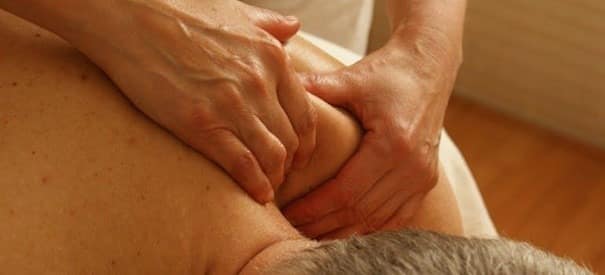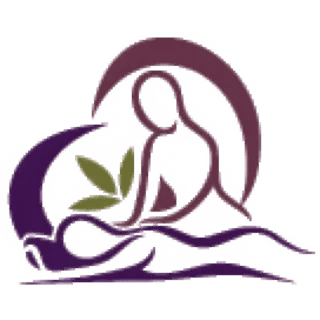The role of feel-good hormones in addiction treatment is significant, and massage therapy can be a transformative experience on your recovery journey. In addiction recovery, the balance of hormones such as endorphins, serotonin, and dopamine is often disrupted, leading to significant challenges. These hormones are essential not only for feeling good but also for maintaining emotional balance and physical well-being. Massage therapy can naturally stimulate these hormones, promoting healing and restoration in individuals undergoing treatment. This therapeutic approach can support and enhance traditional methods of addiction treatment, offering a pathway to more sustainable recovery.
The Science Behind Massage and Hormone Release Regular massages can significantly enhance your overall well-being. But did you know that massage therapy also plays a crucial role in stimulating the release of feel-good hormones, which are vital for emotional and physical health? When massage techniques are applied, the body responds by activating the parasympathetic nervous system. This response is not just relaxing. It triggers the release of endorphins, serotonin, and dopamine—hormones known for their mood-lifting and pain-relieving properties.
The physiological impact of massage extends deep into the nervous system. Gentle pressure and strokes on the skin and muscles signal the brain to lower cortisol levels—the stress hormone—while increasing endorphin levels. This hormonal shift is particularly beneficial for individuals in addiction treatment, as it fosters a sense of calm, reduces stress, and mitigates some of the physical discomfort associated with recovery processes.

The Benefits of Feel-good Hormones in Addiction Treatment
Enhanced feel-good hormone levels during addiction recovery can significantly transform the rehabilitation journey. When individuals undergoing treatment experience increased endorphins, serotonin, and dopamine—thanks to therapeutic interventions like massage—their path to recovery is markedly smoother. These hormones alleviate withdrawal symptoms that are often painful and emotionally taxing. By naturally elevating these hormone levels, massage therapy helps mitigate the acute discomfort associated with withdrawal, reducing the reliance on pharmacological interventions.
Furthermore, the surge in these beneficial hormones diminishes stress and anxiety, which are common challenges faced by those in recovery. A more balanced hormonal state also promotes better sleep patterns, which are essential for physical health and emotional resilience. The overall improvement in well-being and mood stability makes daily challenges more manageable, aiding individuals in maintaining focus on their recovery goals.
Massage Techniques That Promote Hormonal Health
Including massage to boost feel-good hormones in addiction treatment isn’t just about relaxation. Rather, it’s about strategically using specific techniques that optimize hormonal health. Each type of massage offers unique benefits that stimulate the production and release of feel-good hormones, significantly aiding recovery.
Swedish Massage
Swedish massage, known for its gentle, flowing strokes, effectively reduces stress and increases serotonin and dopamine levels. This technique enhances overall relaxation and mood, making it a popular choice for those seeking relief from the emotional and physical stresses of addiction recovery.
Lymphatic Drainage Massage
This massage is designed to promote the natural drainage of the lymph, which carries waste products away from the tissues. So, lymphatic drainage massage not only detoxifies the body but also supports a healthy immune system, which is important for individuals in recovery from addiction.
Deep Tissue Massage
Deep tissue massage targets deeper layers of muscle and connective tissue. This intense pressure helps release chronic muscle tension and increase endorphin levels, natural pain relievers. It’s particularly beneficial for people with a substance use disorder who experience bodily pain and stiffness as side effects of withdrawal.

Reflexology
Reflexology focuses on pressure points in the feet, hands, and ears linked to various body organs and systems. Stimulating these points can help improve the function of the nervous system, enhancing hormone production and emotional regulation.
Integrating Massage into a Comprehensive Addiction Treatment Plan
Integrating massage therapy offers a holistic approach that complements traditional recovery methods. By addressing both physical discomfort and emotional stress, massage can significantly enhance the effectiveness of conventional treatments like counseling and medication management. However, it’s vital to consult with healthcare professionals to ensure optimal outcomes. They can tailor massage techniques to individual recovery needs, determining the frequency and type of massage that best supports each person’s journey.
The importance of a multifaceted treatment strategy becomes even more pressing in light of the growing crisis opioid as well as mental health crisis across the US, specifically in the larger, more urban states like New York. Here, the need for effective and accessible treatment options is critical. Luckily, even the Empire State has safe havens, Newburgh being one of them. There are numerous rehab options in the area that have begun to incorporate holistic therapies like massage alongside more traditional treatments. They recognize the profound impact these combined approaches can have on recovery success. This integration offers hope and healing to those battling addiction, providing them with a comprehensive set of tools to aid in their recovery.

Preparing for a Massage Therapy Session in Addiction Treatment
Preparing for a massage therapy session involves more than just scheduling an appointment. Instead, it also requires careful consideration of personal needs and boundaries. For those new to massage, understanding what to expect during a session can alleviate any apprehension. It’s important to communicate openly with your therapist about any discomfort or sensitivity, especially as touch can sometimes evoke emotional responses in individuals recovering from addiction.
The Right Therapist
Choosing the right therapist is also crucial. A therapist experienced in addiction recovery will be sensitive to the unique challenges faced by their clients, including heightened anxiety or physical discomfort. They will also know how to adapt their techniques to be most beneficial for each individual’s situation. Once you find the right massage therapist, stay with them. This can lead to better results over time as they gain a deeper understanding of your specific needs and recovery progress.
Physical Preparation
Preparing physically for a massage involves being hydrated, wearing comfortable clothing, and ensuring you’re in a calm mental state. These steps help maximize the benefits of massage, making it a valuable component of a comprehensive addiction treatment plan.
Embrace Holistic Recovery Approaches!
As we’ve explored the significant role of massage therapy in boosting feel-good hormones in addiction treatment, it’s clear that this holistic approach can profoundly impact recovery. By enhancing hormone levels, massage provides crucial support, alleviating physical and emotional stress and fostering overall well-being. So, don’t hesitate to embrace massage therapy as a key component of a holistic treatment strategy. Harness these benefits for a healthier, more balanced recovery from addiction!



